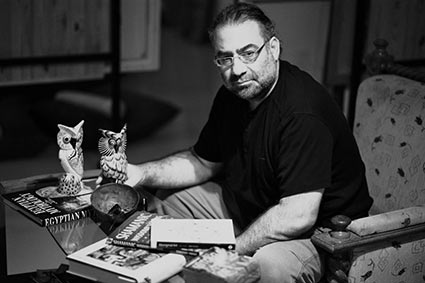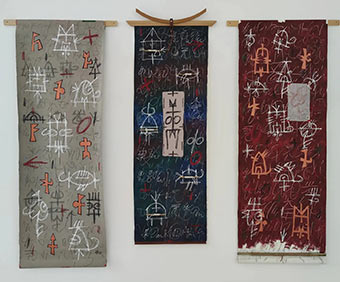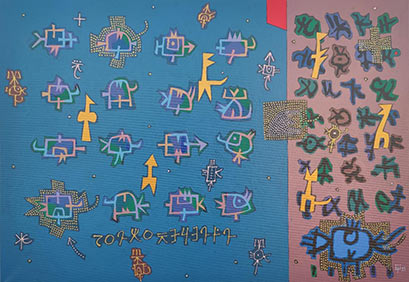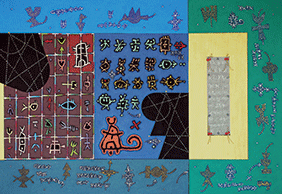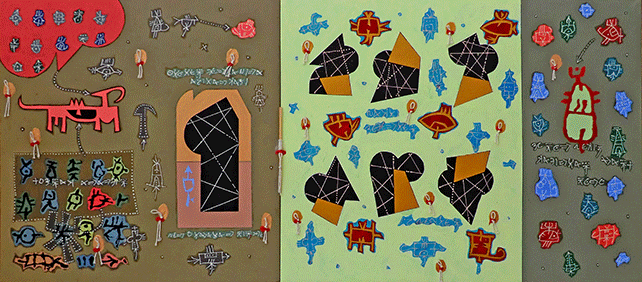INTELLECTUAL ELABORATION OF ABSTRACT SYMBOLS
“A drawing is simply a line going for a walk – and a line is a dot that went for a walk.”
Paul Klee
It is in these words that Paul Klee described his idea of art: a line, a dot. Kandinsky agreed: a painting is nothing more than colors displayed in one way or another. In Arabic art, the written language often becomes a drawing, even a painting – Arabic, as a friend described it to me, is the transformation of the dunes of the desert into graphic lines and dots.
The first thing an observer stumbling upon a painting by Umit Inatci does wonder whether those signs, the lines and dots that crowd the image, are indeed a language. Runic, perhaps, I remember thinking the first time I saw one of his paintings. Moreover, although art is a kind of language, the use of actual words in paintings is something usually practiced by Collage and Pop artists – and Inatci is neither. These paralinguistic codes can be related only to the inter-subjective communication needs of artist himself. The influence of Paul Klee is apparent: a way with colors and with freehand drawing is clearly perceptible. But where Klee went towards the innocent, the childish and the “happy feeling” in one form or another, Inatci seems to take matters much more seriously and his works create a very serious, implicit aura puzzling the viewer as if it were made of an array of encrypted messages to be deciphered.
It is when you pass that first impression that you notice the playfulness – and maybe an attempt at non-intellectual control of his art. When you look at his paintings, all that happens on the canvas appears to be controlled by his brain. One can imagine him considering every single aspect of what he is doing and, even though this can be called a move every artist makes, to him this is the actual reason why he paints. It is as if he were making a speech, as if he were trying to communicate a verbal message – perhaps this is why he uses transfigured language signs and sometimes you have the feeling you’re reading much more than seeing a picture.
If pushed to explain his art, he would tell you all the thinking behind it and being as he is a critic, this should not come as a surprise. Through the years, he perfected and deepened his approach and it is in his late art that, subconscious traits come clearly to the surface. He “incorporates” music to his art; rhythm and vibration of animist sound. “Studies on the relationship between music and painting can be traced back to the ancient history and are closely linked to the comparison between musical keys and shades of color. The development of this analogy gained impetus from the Romantic Movement, which saw in music the other-worldly ideal of spiritual purity, as yet unattained by painting.”*
He listens to music of the nature and ritual sounds of shamanic devotion and transforms his perceptions in a painting and installations. The way this happens is using constantly repetitive (prosodic) signs composed with large space of colors and solid materials in his canvases. Brunches, leather, wax, bones, rope and other organic materials are now part of his art and leave a sense of the unknown, of the deep feeling of his creation. It is a step forward to add a fifth dimension, so to speak, in his intelligent ways and being effected of his intellectual elaboration of abstract symbols.
*Hajo Düchting, Paul Klee -Music as Mentor and Metaphor, Prestel Verlac, Germany 1997.




